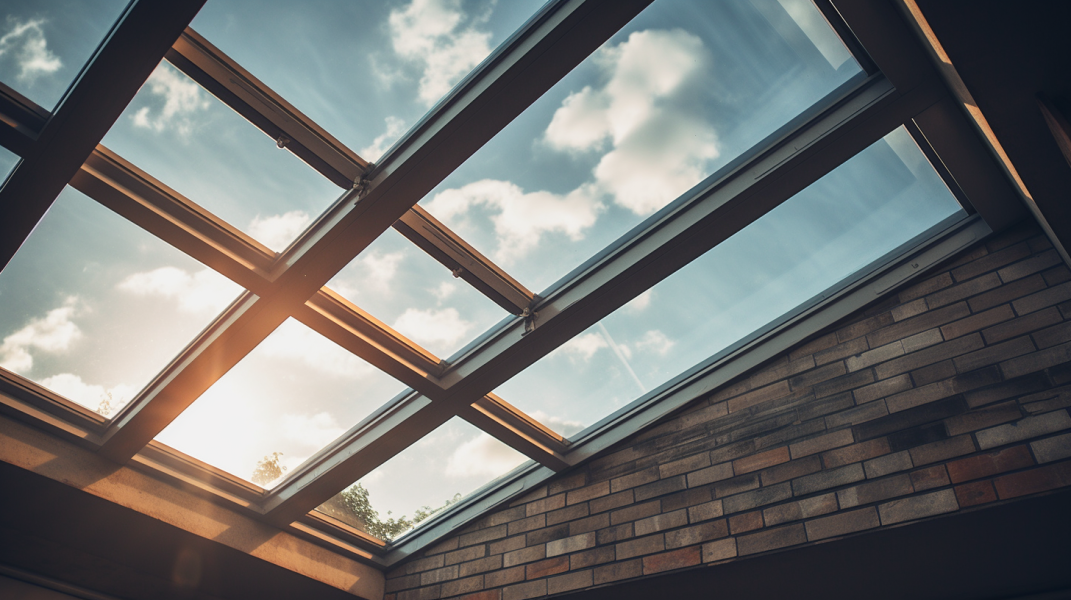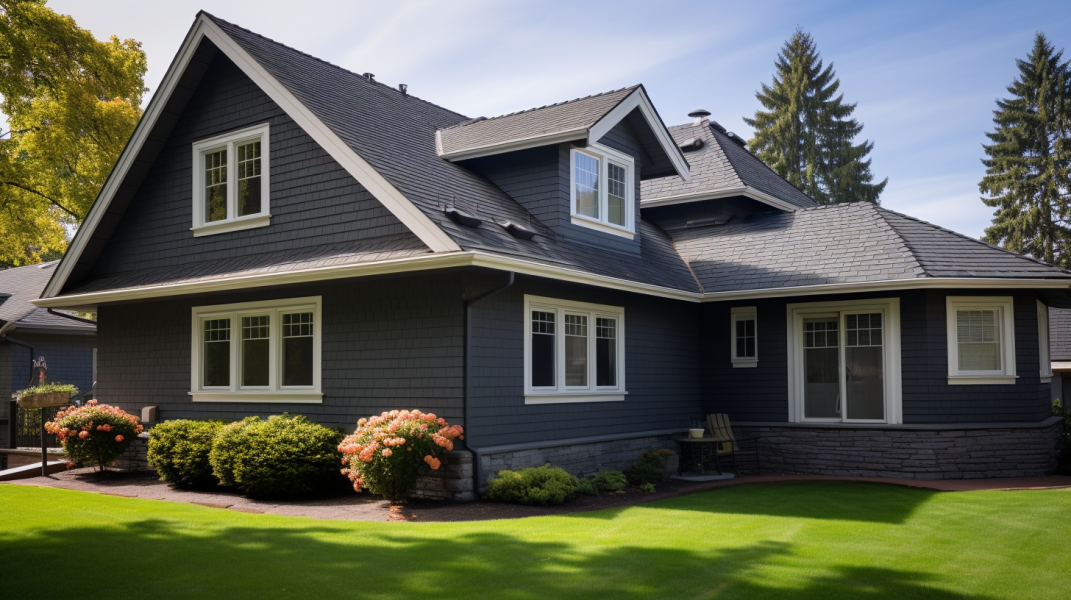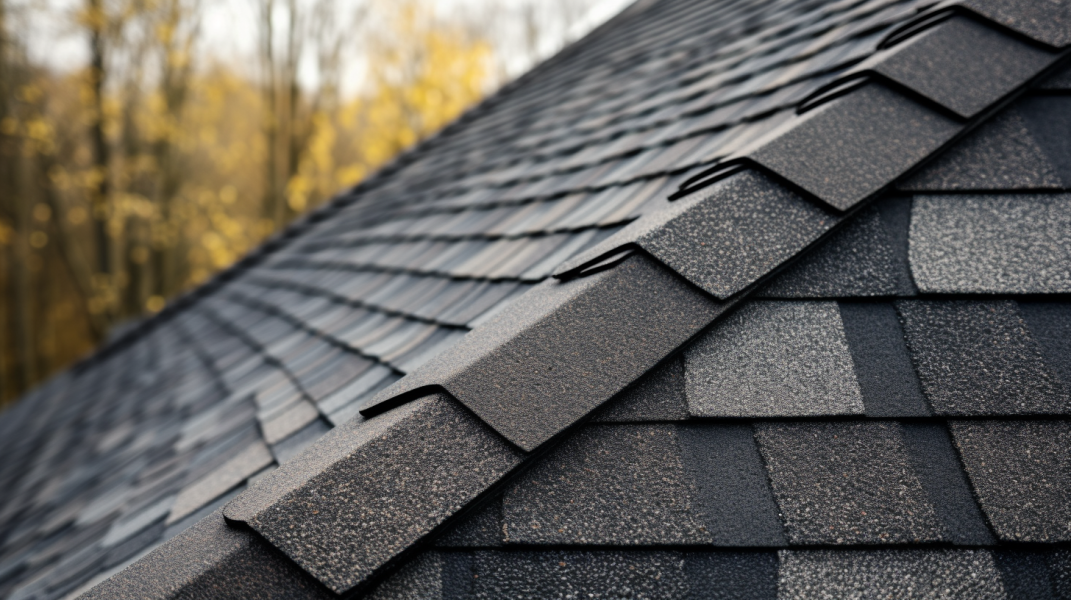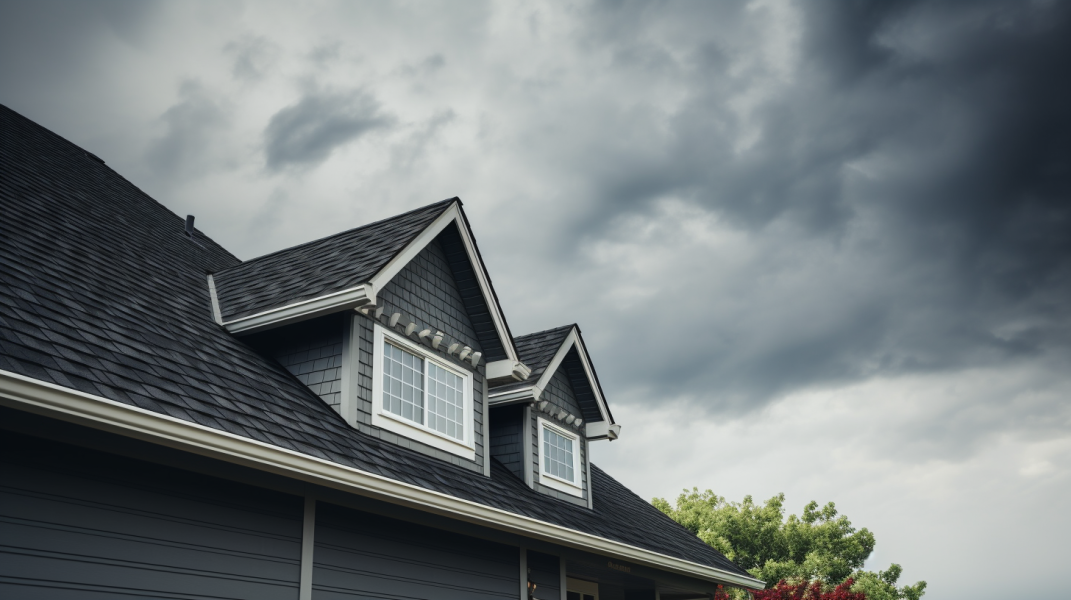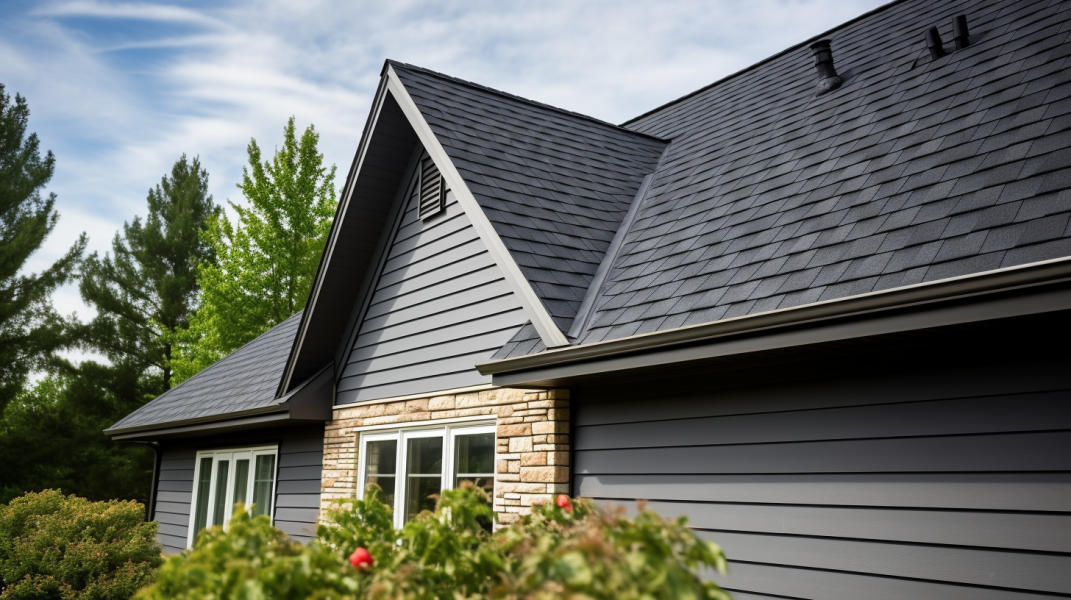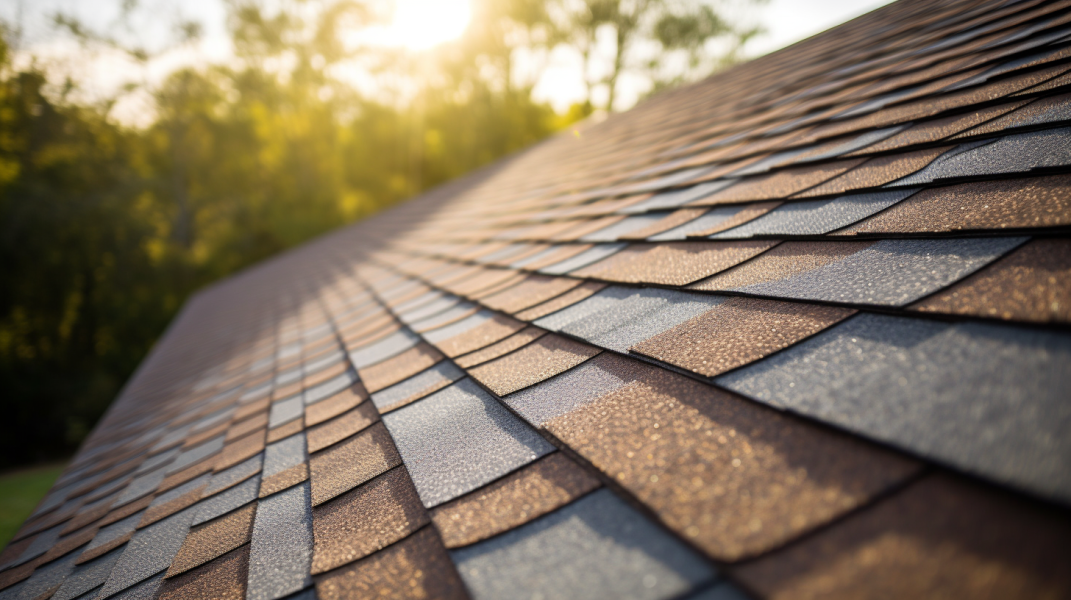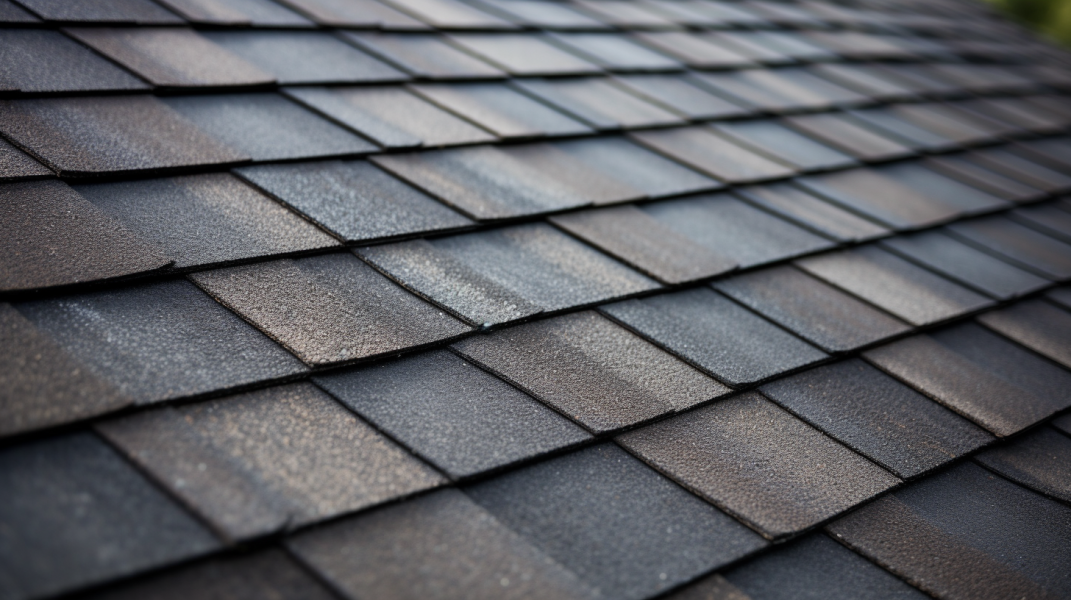How to Repair a Flat Roof Leak?
When you notice a puddle of water inside your commercial building, it might indicate your flat roof leaks. Understanding how to repair a flat roof leak can save you a great deal of worry and significant flat roof repair costs in the long run.
Common Causes of Leaks on Flat Roofs
While flat roofs have their advantages, they are also vulnerable to certain issues, especially leaks. Here are five significant reasons that might cause your flat roof to leak:
Pooling Water
Unlike sloped roofs, flat roofs don't promote adequate water runoff, causing water to pool. Over time, this standing water seeps into the roofing material, causing leaks. Designing flat roofs with a slight slope is crucial to facilitate drainage and avoid water accumulation.
Weather Damage
Flat roofs are directly exposed to weather elements such as heavy rain, snow, hail, and intense sunlight. Over time, these harsh conditions can wear down the roof's protective layer, making the roof vulnerable and leading to flat roof leaks.
Faulty or Aged Roofing Material
The longevity and performance of a flat roof heavily depend on the type of roofing material used. Over time, materials such as the roofing membrane can develop holes or tears, leading to leaks. Also, if the roof was installed using low-quality materials or if the roofing material is beyond its service life, the chances of leaks significantly increase.
Improper Installation
If the flat roof is not correctly installed, it could even force a flat roof replacement much earlier than expected. For instance, if the mechanically attached system used to secure the roof membrane is not appropriately implemented, the roof could develop leaks. Similarly, improper installation or sealing of flashings around roof penetrations (like vents or chimneys) can also cause leaks or other serious flat roof repairs.
Damage from Debris or Heavy Equipment
Flat roofs often serve as a platform for heavy equipment such as HVAC units. The weight and movement of this equipment, combined with fallen debris (branches, leaves, etc.), can cause damage to the roof material and deck, leading to leaks.
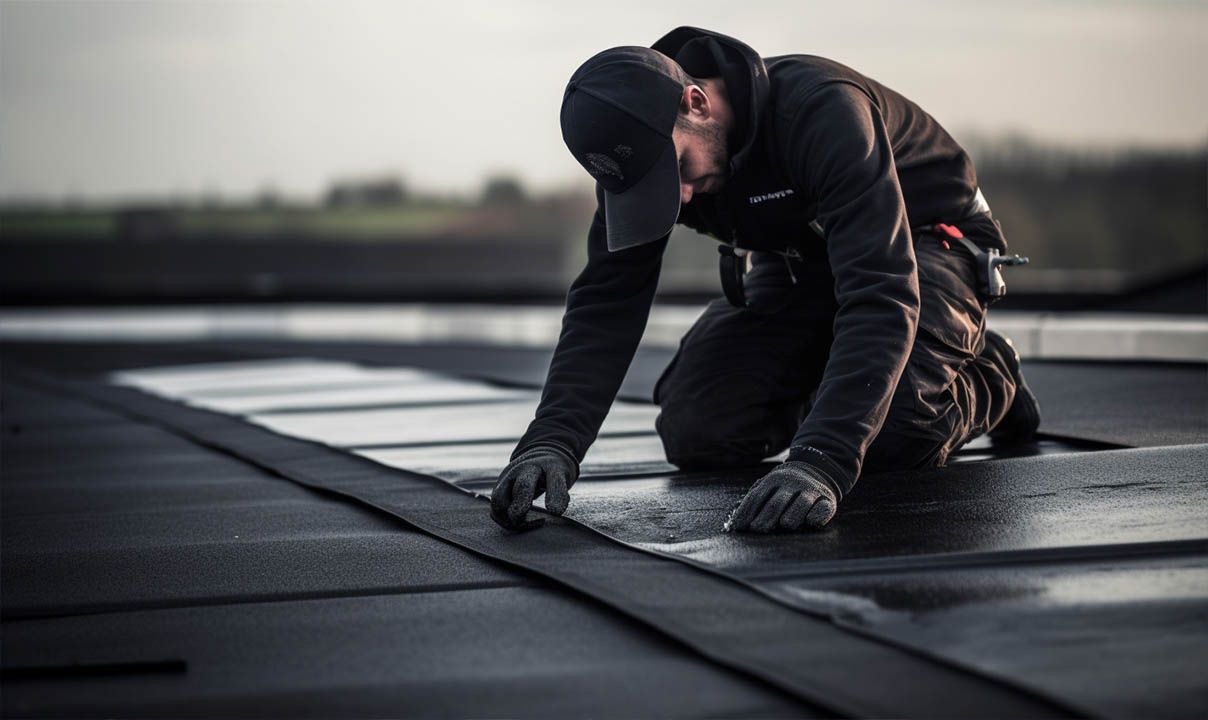
How to Repair a Flat Roof Leak: Step-by-Step Guide
Repairing a flat roof leak requires careful roof inspection to detect the leaking area. However, if the damage is too extensive, a professional roofing company may be necessary for a roof replacement. Here's a step-by-step guide on how to repair a flat roof leak.
Understand the Roofing System
Roof repair materials vary depending on the type of roofing system. While the same process can be used to repair a flat or leaking roof, different materials will require different treatments.
Whether it's a minor flat roof leaking from a small impact or a major one, prompt repair of a leaky flat roof can prevent a temporary fix from becoming a whole roof replacement project. Here are some commonly used flat roof materials:
1. Built-Up Roofing (BUR): This is one of the oldest roofing systems for a flat roof. BUR uses alternating layers of roofing felt or fabrics with bitumen (asphalt or coal tar) and is finished with a top layer of gravel or a reflective coating. It is durable and offers excellent waterproofing, but it is also heavier than other options and requires more maintenance. You need an experienced roofer to repair flat roof materials of this type.
2. Modified Bitumen: A more advanced alternative to BUR, Modified Bitumen is applied in layers, with the final layer typically being a mineral-based wear surface. It offers improved flexibility over BUR and is easier to install.
3. PVC Roofing: PVC roofing material is a single-ply roofing solution that is highly durable and resistant to both fire and water, making it a good choice for commercial flat roof repair or installation.
4. TPO Roofing: Thermoplastic Olefin or TPO is another popular single-ply roofing option. TPO is cost-effective, easy to install, and resistant to UV radiation. It is often white, which helps to reflect the sun's rays and can help reduce energy costs.
5. EPDM Roofing: Ethylene Propylene Diene Monomer (EPDM) is a synthetic rubber material known for its durability and versatility. EPDM is resistant to UV rays and weathering, making it a reliable choice for flat roofs.
6. Fiberglass Roofs: Fiberglass roofs are incredibly durable and lightweight, making them an excellent choice for flat roofs. They also offer a higher degree of flexibility and are easy to repair.
7. Metal Roofs: Metal roofs, typically made of steel or aluminum, are durable, fire-resistant, and require little maintenance. They are more expensive than other options but can last for many years.
8. Asphalt Roofs: Asphalt is a common material used in both commercial and residential roofing. It is inexpensive, easy to install, and provides decent durability.
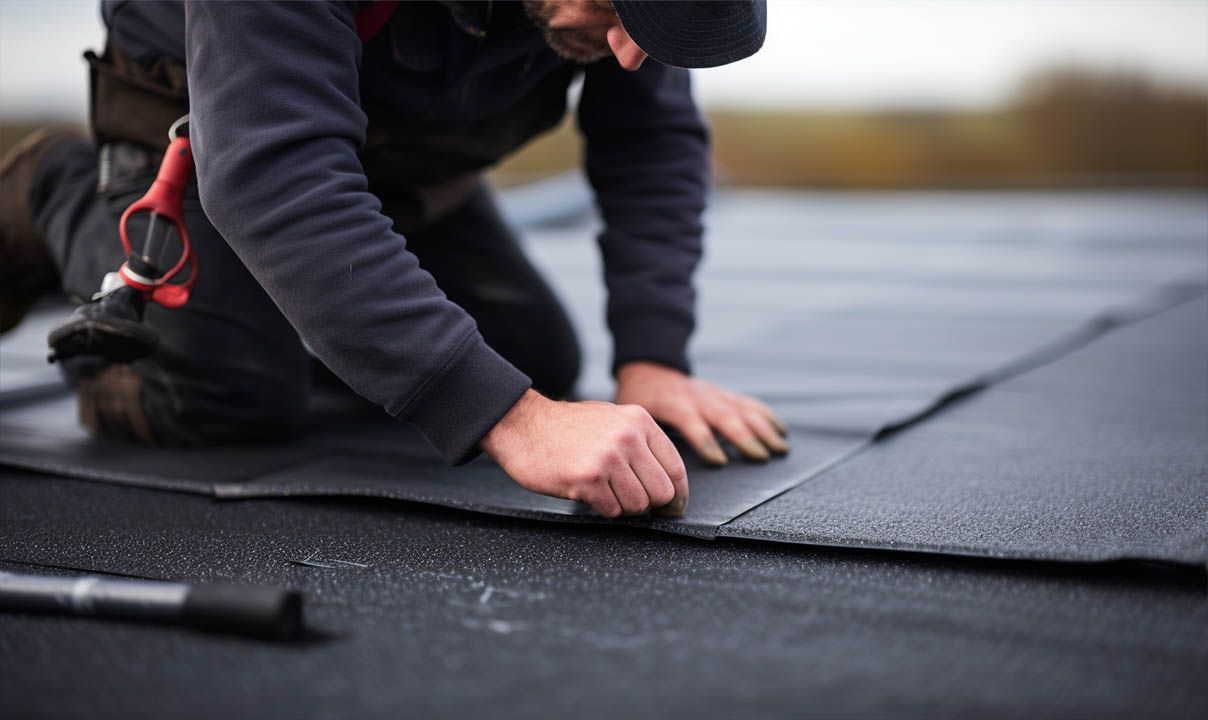
Tools and Materials for Flat Roof Repair Project
You'll need a specific set of tools and materials to conduct a flat roof leak repair. Ensuring you have the right tools at your disposal can help make the process smoother and more efficient. Here are some of the essential tools and materials you may need:
- Utility Knife
- Trowel or Putty Knife
- Roofing Cement
- Roofing Material
- Protective Gear
- Fasteners or Roofing Nails
- Roofing Primer and Coating
- Brush or Roller
- Measuring Tape
- Clean Rags
The Procedure
Now that you have everything ready, it’s time to start working. Here is a clear guideline to follow.
Step 1: Roof Inspection
Begin by inspecting the entire roof for visible signs of damage. Look for bubbles or blisters in the roof material or areas where the roofing material has come loose. A minor leak can cause significant roof damage if left unattended, depending on the roof type.
Step 2: Clear Damaged Area
Once you have identified the leaking roof, clear any debris from the damaged area. This is essential to clearly understand the problem and avoid causing further damage.
Step 3: Cut Damaged Roof Material
Using a utility knife, cut away the damaged roof material to expose the roof deck. Be careful not to cut too deep and damage the underlying structure.
Step 4: Apply Roofing Cement
Apply roofing cement to the damaged area to seal the leak. Ensure to spread a thin layer of roofing cement, extending it slightly beyond the damaged area.
Step 5: Apply New Roofing Material
Cover the cemented area with a new piece of roofing material, ensuring it's the same type as the existing roof. This could be PVC roofing for PVC roofs, TPO roofing for TPO roofs, or other materials for asphalt roofs, metal roofs, or fiberglass roofs.
Step 6: Secure the New Material
Ensure the new material is properly secured to prevent future leaks. For a mechanically attached system, use the appropriate fasteners. For a fully adhered system, use more roofing cement to bond the new material to the existing one.
Step 7: Apply a Roof Coating
After making necessary repairs, apply a reflective coating to the entire roof. This helps to prevent future leaks and prolongs the lifespan of the roof.
While these DIY repairs may fix a leaking flat roof, in some instances, like extensive damage per square foot or damaged membrane beyond repair, a roof replacement might be the only viable solution. Always consult a professional roofer if you're uncertain about your flat roof repair options.
Conclusion
A leaking flat roof can feel like an impending disaster, comparable to a swimming pool on your commercial building's roof. However, understanding the common causes of flat roof leaks and knowing how to repair a flat roof leak can help mitigate the problem.
In the long run, regular roof inspections, immediate repair of minor leaks, and applying roof coating can help prolong your flat roofing system's life and save on potential flat roof repair costs. But when in doubt, it's always best to reach out to a professional roofing contractor for their expertise and roofing services.
This is where Nova Home Improvements comes in. This highly experienced and reputable company offers high-quality flat roof repair services with a focus on customer satisfaction.
BROWSE OUR WEBSITE
CONTACT INFORMATION
Address: 764 Springfield St, Agawam MA 01030
Phone: (413) 455-8218
Email: novahome2021@gmail.com
License Numbers:
Ct hic 0666426
Mass Hic203142
Mass Csl116158
BUSINESS HOURS
- Mon - Sat
- -
- Sunday
- Closed


100% with no payments for a year financing available
100% financing at 0% interest for one year through GreenSky
ACH Available







